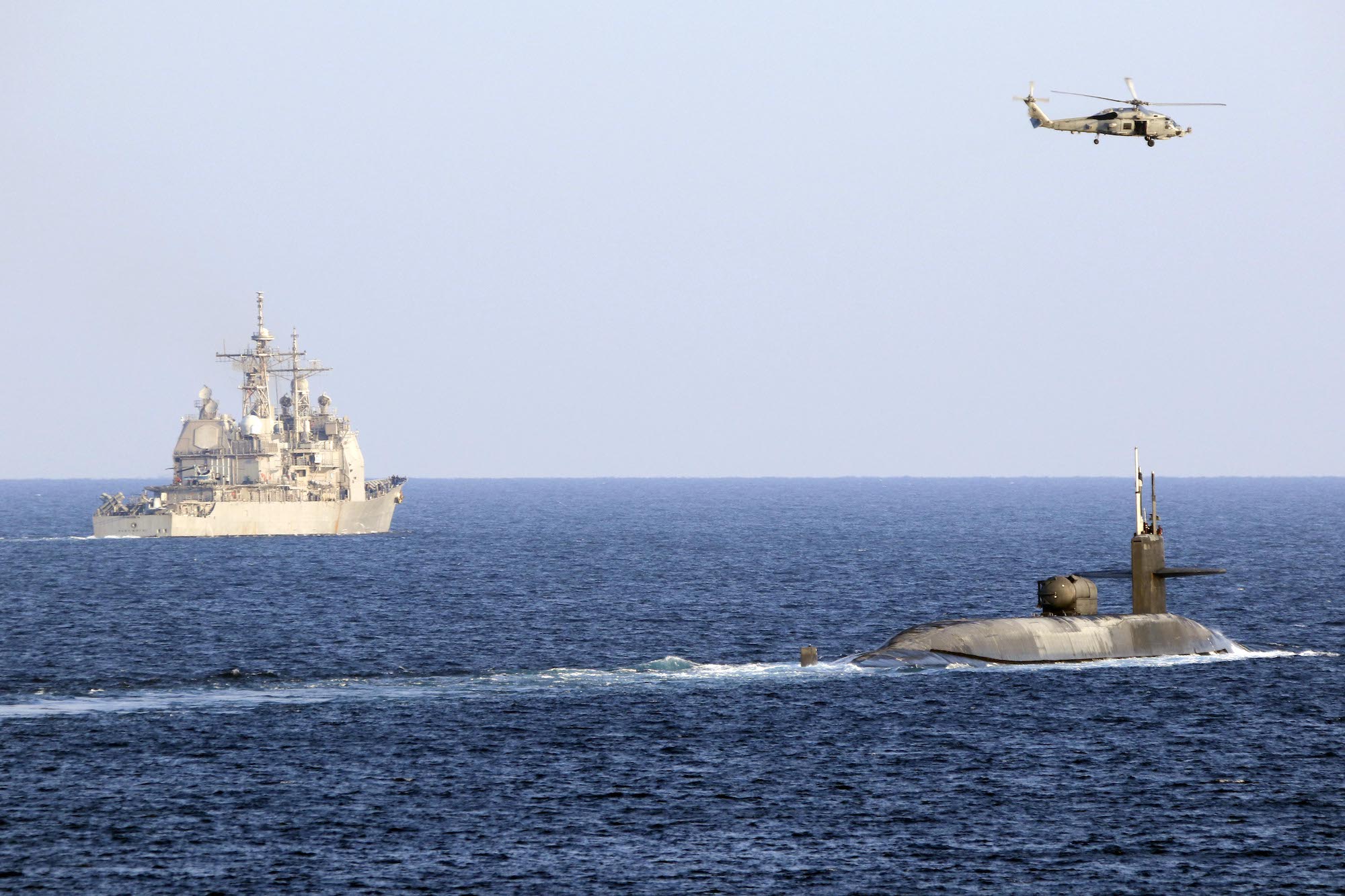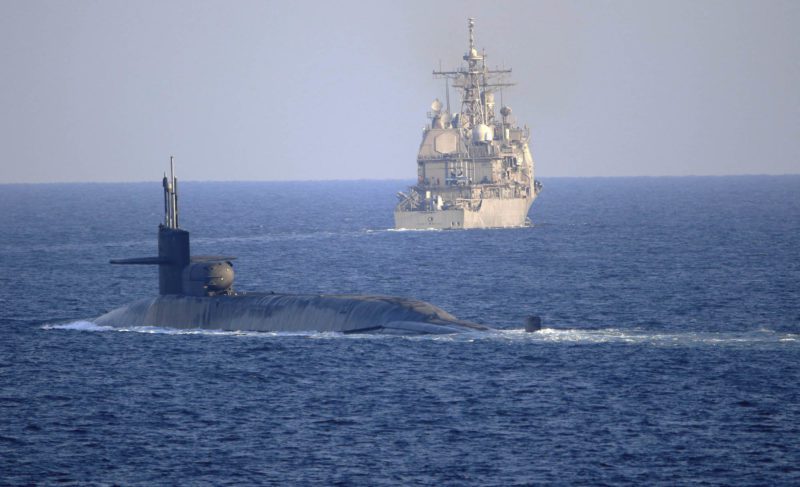China Hosts Foreign Naval Officials Amid South China Sea Tensions
By Laurie Chen QINGDAO, China, April 21 (Reuters) – The Chinese Navy on Sunday kicked off a biennial meeting of top foreign naval officials in the port city of Qingdao, in a...


An MH-60R Seahawk helicopte flies above the guided-missile submarine USS Georgia (SSGN 729) as the submarine transits with the USS Port Royal (CG 73) in the Strait of Hormuz, December 21, 2020. Photo: U.S. Navy
The U.S. Navy’s nuclear-power submarine USS Georgia has entered the Arabian Gulf after transiting through the Strait of Hormuz.
The Navy said the sub was accompanied by the guided-missile cruisers USS Port Royal (CG 73) and USS Philippine Sea (CG 58) when it transited on December 21.
“Georgia’s presence in the U.S. 5th Fleet area of operations (AOO) demonstrates the U.S. Navy’s ability to sail and operate wherever international law allows,” the Navy said in a statement.
The USS Georgia is deployed to the U.S. 5th Fleet area of operations in support of naval operations to ensure maritime stability and security in the Central Region, which connects the Mediterranean and Pacific through the Western Indian Ocean and includes critical chokepoints such as the Strait of Hormuz, the Bab el-Mandeb Strait and the Suez Canal.


USS Georgia (SSGN 729), an Ohio-class guided-missile submarine, can carry up to 154 Tomahawk land-attack cruise missiles and can be configured to host up to 66 Special Operations Forces.
“As an inherently flexible maneuver force, capable of supporting routine and contingency operations, Georgia’s presence demonstrates the United States’ commitment to regional partners and maritime security with a full spectrum of capabilities to remain ready to defend against any threat at any time,” the Navy said.
Ohio’s arrival in the Gulf comes about a month after the U.S. aircraft carrier USS Nimitz was re-deployed there from the Indian Ocean just a few days after Iran’s top nuclear scientist was killed in an ambush, although the Navy said the deployment was not related to any specific threats.
The U.S. Navy in May warned mariners in the Gulf to stay at least 100 meters away from U.S. warships or risk being “interpreted as a threat and subject to lawful defensive measures,” an apparent thinly-veiled warning to Iran after Iranian vessels swarmed on U.S. Navy and Coast Guard ships the month before.
Tensions between Washington and Tehran have escalated since 2018 when President Trump withdrew from Iran’s 2015 nuclear deal and reimposed sanctions that have crippled Iran’s economy.


Join the 105,926 members that receive our newsletter.
Have a news tip? Let us know.Access exclusive insights, engage in vibrant discussions, and gain perspectives from our CEO.
Sign Up




Maritime and offshore news trusted by our 105,926 members delivered daily straight to your inbox.



Essential news coupled with the finest maritime content sourced from across the globe.
Sign Up